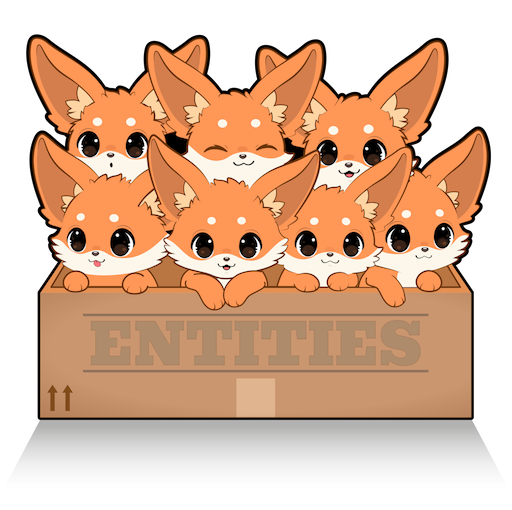Entities
Entities are lightweight, immutable objects
readonly record structs, technically
You can simply store them in variables, collections, or even in Component attached to another Entity.
Components can be (and usually will be) attached to Entities
... unless you are very boring.
Entities have a simple lifecycle
Each Entity knows if it is alive inside a World, and an Entity can only live in up to one World at once, and it needs a World to be alive. (don't we all!)
Despawned Entities are recycled, so they are extremely cheap to spawn and process even in large waves without runaway memory consumption.
 (cuddly, lively, come in litters of
(cuddly, lively, come in litters of 1,073,741,824)
Composition
Entities can have any number of Components attached to them. This is how the fennecs Entity-Component Systems provides composable, structured data semantics.
They can also serve as the secondary key in a Relation) between two Entities.
Entities with the identical combinations of Component Type Expressions share the same Archetype.
A dead Entity never has Components.
Internals
Tidbits for the curious
The defining property of an entity is its Identity - a specific type of 64-bit number. Associated with a specific World, this gives us an object to operate on.
A dead Entity doesn't exist in any World (it's just a scrap of data and a leftover Identity whose successor was already returned to to the internal IdentityPool).
Living Entities sit in a slot in a world's storage structure - both in a Meta in the world's Meta-Set, as well as their current Archetype's storage (Storage<Identity>).